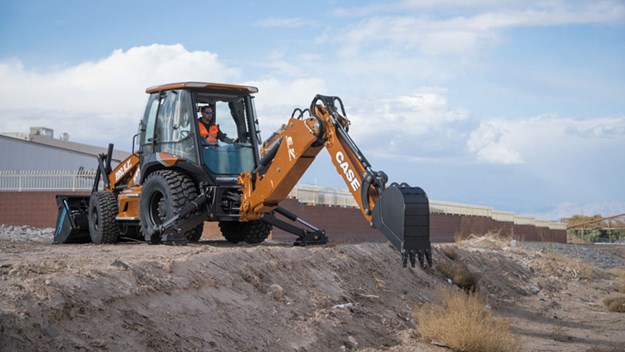CASE Construction Equipment has unveiled the new 580EV – the industry’s first fully electric backhoe loader
 |
|
The 580 EV electric backhoe is ideally suited to urban environments, with its elimination of emissions
|
CASE Construction Equipment has introduced ‘Project Zeus’ — the 580 EV (Electric Vehicle), the construction industry’s first fully electric backhoe loader, which will significantly lower daily operating costs, produce zero emissions, reduce maintenance demands and satisfy local/project-based incentives for working with electric equipment/vehicles.
City governments and municipalities will also benefit from the elimination of emissions for working in urban environments and close to other buildings/people, as well as the reduced noise generated by the equipment.
“CASE built the very first factory-integrated backhoe loader in 1957 and has been at the forefront of backhoe innovation,” says Leandro Lecheta, head of construction equipment — North America, CNH Industrial.
“The 580 EV is a significant step forward in our commitment to sustainability, the evolution of earthmoving equipment and truly practical innovation that drives real savings and competitive advantages for backhoe owners.
Eric Zieser, director — global compact equipment product line, CASE, adds: “The backhoe loader is perfectly suited for electrification as the varied use cycles, from heavy to light work, provide an excellent opportunity to convert wasted diesel engine hours into zero consumption battery time — yet provide the operator with instantaneous torque response when needed.
“At low idle a diesel engine has reduced torque and requires time for the engine to ramp up to meet the load demands. Electric motors, on the other hand, have instantaneous torque and peak torque available at every operating speed.”
The 580 EV is powered by a 480-volt, 90-kilowatt-hour lithium-ion battery pack that can be charged by any 220-volt/three-phase connection. While applications will vary, each charge will support most common eight-hour workdays. The battery separately powers the drivetrain and hydraulic motors, resulting in hydraulic breakout forces equal to diesel-powered machines and improved performance during simultaneous loader and drivetrain operation.

